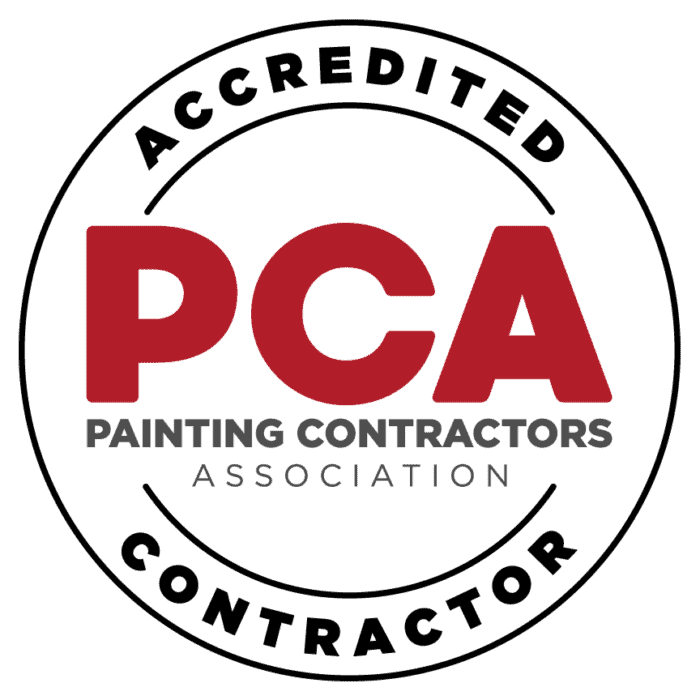When it comes to transforming the look of your home, choosing the right interior paint is crucial. But it’s not just about picking a beautiful color.
The different types of interior paint available are designed for various uses, each with its unique characteristics. Our interior house painting service in Erie, CO, and nearby areas is here to guide you through the maze of choices, ensuring you get the color you desire and the quality and longevity you expect.
In this guide, we’ll walk you through the different types of interior paint and best practices for choosing the right one for your space. Whether you’re updating a single room or giving your entire home a makeover, we have the expertise to bring your vision to life.
What are the Different Types of Interior Paint?
When choosing paint for your home, one of the first decisions you’ll have to make is between water-based and oil-based options. Both have their perks, and the best choice depends on what you’re looking to achieve with your painting project.
Water-based paints are known for their easy cleanup and quick drying times. They’re also better for the environment and usually have less of a smell. On the other hand, oil-based paints are more durable and can give you a smoother finish. However, they take longer to dry and have a stronger smell.
If you want a paint that’s easy to work with and dries quickly, water-based is the way to go. But if you’re looking for durability, especially in high-traffic areas, you might want to consider oil-based options. Understanding the differences between these different types of interior paint will help you make an informed decision, ensuring you’re happy with the results for years to come.
Types of Water-Based Paints
Now that you’ve got a basic understanding of water-based vs. oil-based options let’s dive deeper into the types of water-based paints you might come across. Generally, the two most common types are latex and acrylic.
Latex Paint
This is the most commonly used type of interior paint, and for good reason. One of its big perks is that it’s kind to the environment. Latex paint dries quickly, which means you can finish your project faster. Cleanup is also a breeze; soap and water are all you need to get your brushes clean.
Latex paint is usually the go-to for walls and ceilings. It’s also a green choice, meaning it’s better for the planet than some other options out there. The quick drying time makes it super convenient if you’re trying to get your space back to normal as soon as possible. And if you happen to make a little mess, no worries—soap and water will do the trick.
Acrylic Paint
While acrylic paint is pretty similar to latex, there are some key differences you should know. The main thing that sets acrylic apart is that it has more of what’s called “acrylic polymers.” This makes the paint more durable, which can be a big plus depending on what you’re painting.
Because it’s more durable, acrylic paint is often a bit more expensive than latex. But you might find the extra cost worth it for surfaces that need to stand up to daily life like cabinets or high-traffic areas.
Choosing among these different types of interior paint can feel overwhelming, but understanding the basics can help you make an informed decision, ensuring you’re happy with the results for years to come.
Types of Oil-Based Paints
Moving on from water-based options, let’s look at oil-based paints, which offer their own set of advantages. If you’re dealing with surfaces that need a bit more toughness, oil-based paints like alkyd and enamel might be what you need.
Alkyd Paint
This type of paint is known for its durability and the smooth finish it provides. Unlike water-based paints, alkyd paint doesn’t leave behind brush or roller marks, making the end result look more polished.
One of the biggest advantages of alkyd paint is how durable it is. It stands up well to everyday wear and tear, making it a good option for surfaces that see a lot of action. Because of its durability, alkyd paint is often used on floors, doors, and furniture. These are areas where you need something that can handle a lot.
Enamel Paint
Enamel paint is designed to withstand time and elements, making it a solid choice if you’re looking for something that will last. While it’s more commonly seen in exterior applications, enamel can also be used indoors. This gives you the flexibility to use it in various settings and not just limit it to outdoor projects.
Understanding Paint Finishes
While you’ve considered the different types of interior paint bases like water-based and oil-based, the finish you pick can be equally impactful. Below is a comprehensive guide to help you make an informed decision:
Flat or Matte
Flat or matte finishes work excellently in rooms that have little to no foot traffic, such as adult bedrooms, personal offices, and formal dining rooms. Their lack of shine makes them ideal for spaces where you want to create a calm and serene atmosphere.
These are also non-reflective, which is perfect for hiding wall imperfections like bumps, cracks, or uneven textures. However, these finishes are less durable compared to glossier alternatives. They can easily scuff, and removing stains might prove difficult. Flat paints are often the cheapest option but may require frequent touch-ups or repainting.
Eggshell
Eggshell is the middle-of-the-road option, balancing between flat and glossy finishes. It works well in hallways and dining rooms where you need a bit more durability than flat finishes offer, but without the high shine that can amplify imperfections.
Eggshell finishes have a subtle, low-sheen appearance that offers a level of washability. They can resist some stains and scuffs, making them relatively easier to clean than flat paints. However, they are not as durable as satin or gloss finishes, so they may not be the best for high-traffic areas.
Satin
Satin finishes are ideal for kitchens and bathrooms, spaces where moisture resistance is crucial. The soft sheen of satin paint is more forgiving of wall imperfections than glossier finishes.
Satin finishes are formulated to resist mildew, making them an excellent choice for damp and humid areas like bathrooms and kitchens. However, they can be tricky to touch up, as the touched-up areas may stand out against the original paint.
Semi-Gloss
Semi-gloss finishes are well-suited for areas that encounter moisture and need to be wiped down frequently, such as kitchens and bathrooms. They are also commonly used on trim, doors, and cabinets for a more distinguished appearance.
Semi-gloss is excellent at resisting moisture and is easy to clean. However, it tends to show imperfections like brush strokes, roller marks, and wall blemishes more easily compared to lower sheen finishes.
High Gloss
High gloss is your go-to for a shiny, glass-like finish. It is primarily used on trim, doors, and furniture where durability and visual impact are desired.
High-gloss finishes are highly durable and can withstand frequent cleaning. They’re resistant to scuffs and marks, which makes them perfect for surfaces that take a beating. However, they are often the most expensive and are unforgiving of application errors; any imperfection will be highly visible.
How to Choose the Best Paint for Your Project
Picking the right paint is a big deal. It can change the look and feel of a room in an instant. But how do you know which one to go for? Here’s a simple guide to help you figure out the best fit for your project, considering different types of interior paint and other factors.
Considerations of Color
Color can make or break a room. Light colors like whites and pastels can make small spaces look bigger and more open. Dark colors, on the other hand, can give a room a cozy, intimate feel. So, think about what vibe you want to set in the room before you decide on a color.
But don’t just trust the color samples. Paint a small test patch on the wall to see how it looks in different lights at different times of the day. Remember, the color can look different depending on the lighting in your room.
Considerations of Finish
The finish you choose is equally important. Flat or matte finish can give a calm, quiet vibe but isn’t the best for busy spaces because it isn’t easy to clean. Eggshell and satin finishes are a middle-ground option that’s a bit easier to clean and works well in areas like the living room or bedroom. If you’re painting a bathroom or kitchen, go for semi-gloss or high gloss finishes. These are moisture-resistant and easy to clean.
When picking a finish, also think about the condition of the walls. If your walls have lots of bumps or imperfections, a less shiny finish like flat or eggshell can help hide these.
Final Thoughts
Choosing the right paint isn’t just about color but also the type and finish that best suits your needs. From understanding the different types of interior paint to considering the room’s function and lighting, a lot goes into making the right choice. But the results can be stunning when you put in the time to get it right.
We hope this guide helps you feel more confident in choosing the best interior paint for your project. If you have any more questions or need expert advice, don’t hesitate to reach out to us.
Call us at 970-660-3993 for a FREE estimate. We’re here to make your painting project in Broomfield, Lafayette, CO, and surrounding areas as smooth as possible!





